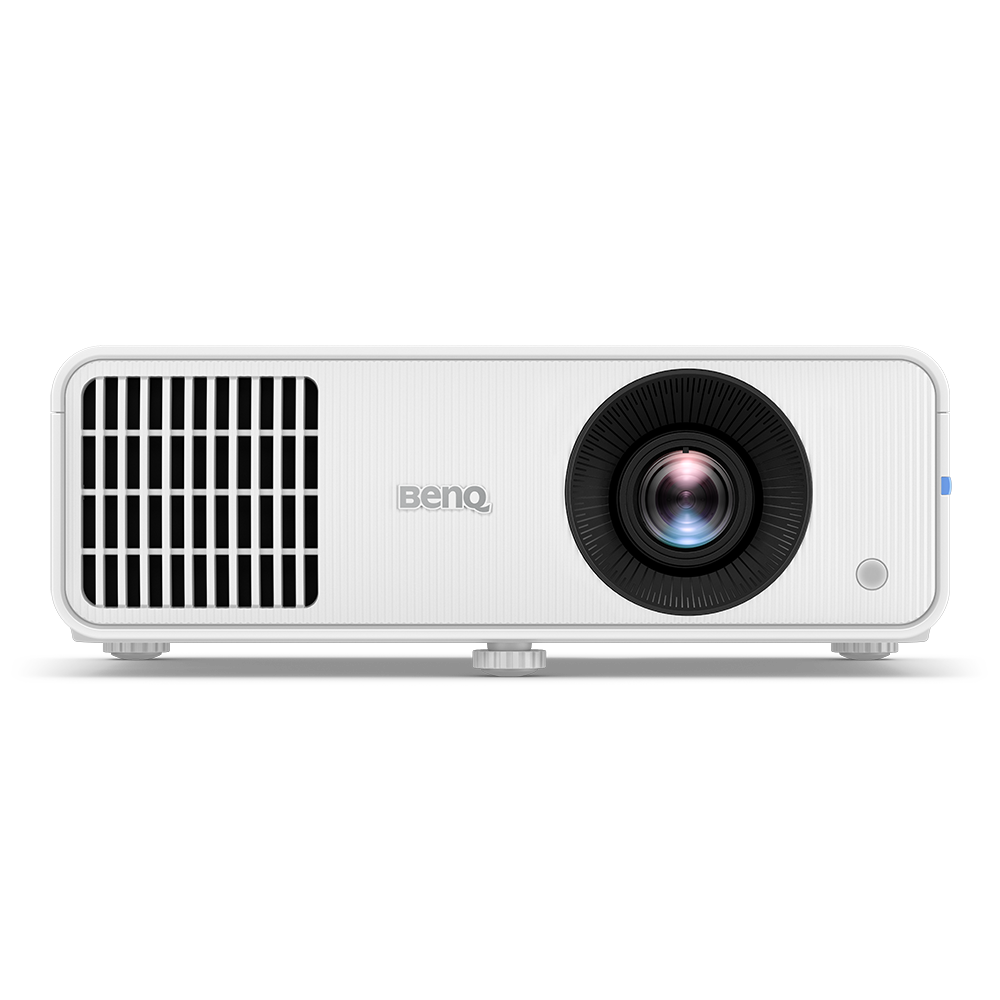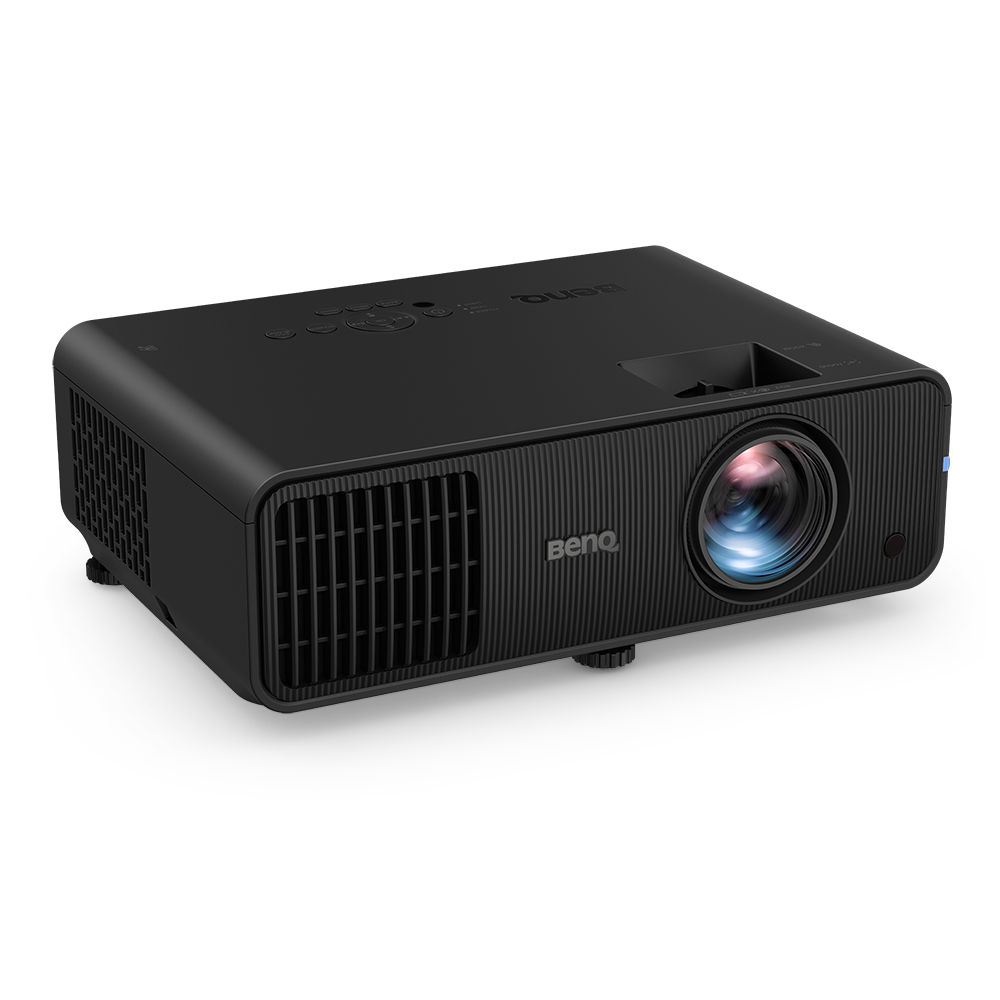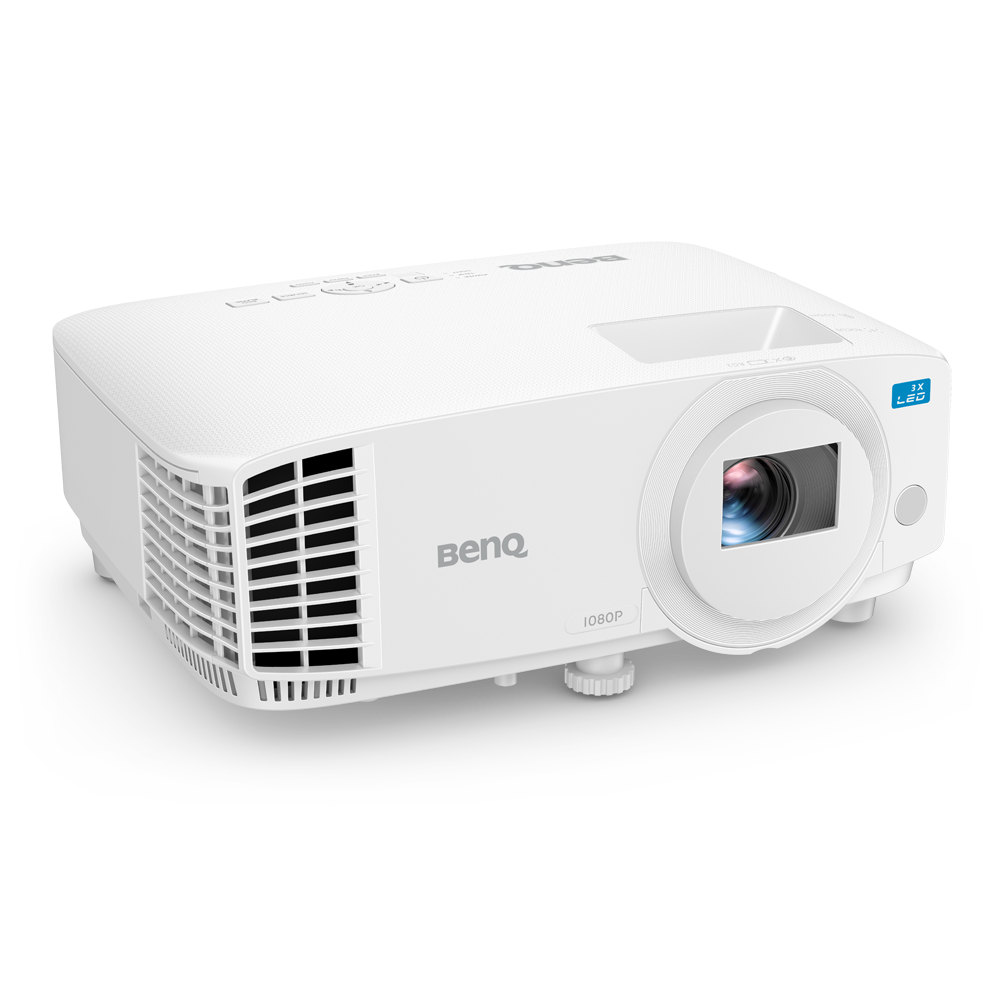A Guide to ESG: How to Go Green with Eco-Friendly Projectors?
- BenQ
- 2024-03-20

The trend toward eco-friendliness is strong in the business world, with many small and medium-sized businesses (SMBs) fully embracing the concept and actively working to make their workplaces more energy-efficient. Projectors, a common fixture in modern offices, play a significant role in reducing energy consumption. However, decision-makers and IT personnel opting for eco-friendly projectors need a clear understanding of what makes a projector eco-friendly and how to manage its usage effectively. This knowledge can further reduce the environmental impact of projectors beyond initial expectations.
The first step in the process described above is making sure that the projector itself is environmentally friendly. Addressing this question can be done by looking deeper into three main areas regarding the projector: its manufacturing process, its light source, and whether or not it includes any further power-saving features.
An easily overlooked contributor to a projector’s environmental impact is the manufacturing process involved in producing the projector itself. This means that the vision of creating a greener office via an eco-friendly projector starts with selecting a projector whose manufacturing process maximizes its use of re-usable and recyclable materials while minimizing its share of hazardous or wasteful components. To identify projectors that align with these types of requirements, a potential buyer should look for certifications by official regulatory bodies and/or environmental organizations (e.g., RoHS).
BenQ's new SSI Projector incorporates eco-friendly packaging materials to reduce plastic usage. At the same time, the product's smaller size compared to models with similar brightness levels helps reduce transportation costs and carbon emissions.
A critical aspect influencing a projector's energy-saving capabilities is its light source. Although the overall power consumption of a new light source projector may not necessarily be lower than that of a lamp-based projector, when utilizing BenQ's next-gen SmartEco, SSI projectors can achieve higher energy-saving rates compared to lamp-based ones. Another significant environmental advantage of SSI projectors is their mercury-free composition. Furthermore, SSI light sources have longer lifespans, reducing the need for frequent replacements.
Where the previous two aspects of a projector’s eco-friendly potential focused on hardware-related elements, the firmware utilized by the projector’s hardware can also be a major factor in determining whether or not a projector is eco-friendly. Through power-saving features such as BenQ’s SmartEco – which allows BenQ projectors to automatically adjust the brightness of the projected image in real time based on its content – a projector can further minimize its energy usage past its base power consumption level.
After addressing the question of whether a projector is eco-friendly, organizations can further minimize the projector’s environmental impact by choosing practices that maximize its power-saving potential. The following are some tips for long-term habits which, when adopted, can help further reduce a projector’s energy consumption.
The brightness needed from a projector should always be dictated by the conditions of its ambient light. Though it’s obvious that in well-lit settings the brightness on the projector will need to be adjusted to higher levels, many forget to reduce the brightness level if the setting is darker, creating excess energy use. Even when not taking environmental impact into account, adjusting a projector’s brightness level based on ambient lighting will also optimize the quality of the projected image by preventing overly bright and/or oversaturated images.
One of the most commonly neglected practices that can help boost both a projector’s performance and its energy-saving potential, is the regular cleaning of dust and particles from the projector’s lens and chassis. Regardless of the type of projector (SSI or lamp), periodic cleaning will help the projector maintain its effectiveness and prevent overheating, all of which reduces excess energy use.
As discussed earlier, a power-saving mode allows the projector to unlock its full energy-saving potential…so long as one remembers to use it. Almost all projectors on the market have some type of power-saving mode built into them, with some allowing for customization and others including intelligent capabilities (as with BenQ’s SmartEco), so remembering to activate such capabilities should always be in the plan for offices that are intent on going green.
Keeping the projector cool is a very important facet of making sure it’s energy efficient, so the projector should not be used in a high-temperature space and should only be placed in a location where nothing obstructs or is in the immediate vicinity of its cooling vents.
Outside of energy use, reducing waste is another important aspect of committing to creating a greener office, so the ability to keep and use a projector well past an average lifespan is another part of the overall eco-friendly equation. To help companies do so, we have a few more tips that will allow a projector to maintain performance over a longer span of time.
Excess heat not only negatively affects a projectors performance, but also causes long-term damage to its internal parts, which in turn leads to a shorter lifespan. While for those that use a lamp projector, this means respecting the warm up and cool down period needed to power on and off the projector, it also points to the fact that SSI projectors, whose light sources do not require such precautions and thus feature instant on/off capabilities, might be smarter choices in terms of ensuring long lifespans.
Air filters on a projector are meant to reduce the amount of dust and grime that may reach its internal parts and cause them damage; therefore, they should be regularly replaced by the IT staff members in order to reduce breakdown and maximize the projector’s lifespan. Decision makers, on the other hand, can look specifically for a projector with built-in anti-dust designs early on in the purchasing phase, to forgo the filter replacement procedure all together.
As with any other product, overuse or elongated use of a projector will lead to a shortened lifespan, thus organizations should remind staff to power off a projector anytime its use is not required. Decision makers should also keep in mind that SSI projectors feature more durable light sources compared to the mercury bulbs used in lamp projectors.
You Might Also Like
-
Trends & Knowledge
How to Choose an Energy-Saving Projector to Optimize Costs for SMBs?
Projectorshould be part of any green initiative. However, for many small and medium-sized businesses (SMBs), choosing an energy-saving projector isn't straightforward…
2024.03.20 -
Trends & Knowledge
LED / Laser Projectors vs. Lamp Projectors: Which is a Smarter Investment?
This article aims to assist decision-makers by outlining the cost factors and environmental impacts associated with each type of projector…
2024.03.20 -
Trends & Knowledge
How interactive displays can improve meetings in the financial industry with tools built for data, visualization, and collaboration
Meeting efficiency is imperative for professionals in the financial industry. To make the best strategic decisions for their clients, the interactive display supports the financial team to win the business and make the communication effiency.
2021.04.11 -
NEEDS IN FOCUS
BenQ Next-Gen SmartEco Energy-Saving Technology
BenQ Next-Gen SmartEco energy-saving technology to maximize the power efficiency without compromising the image quality


